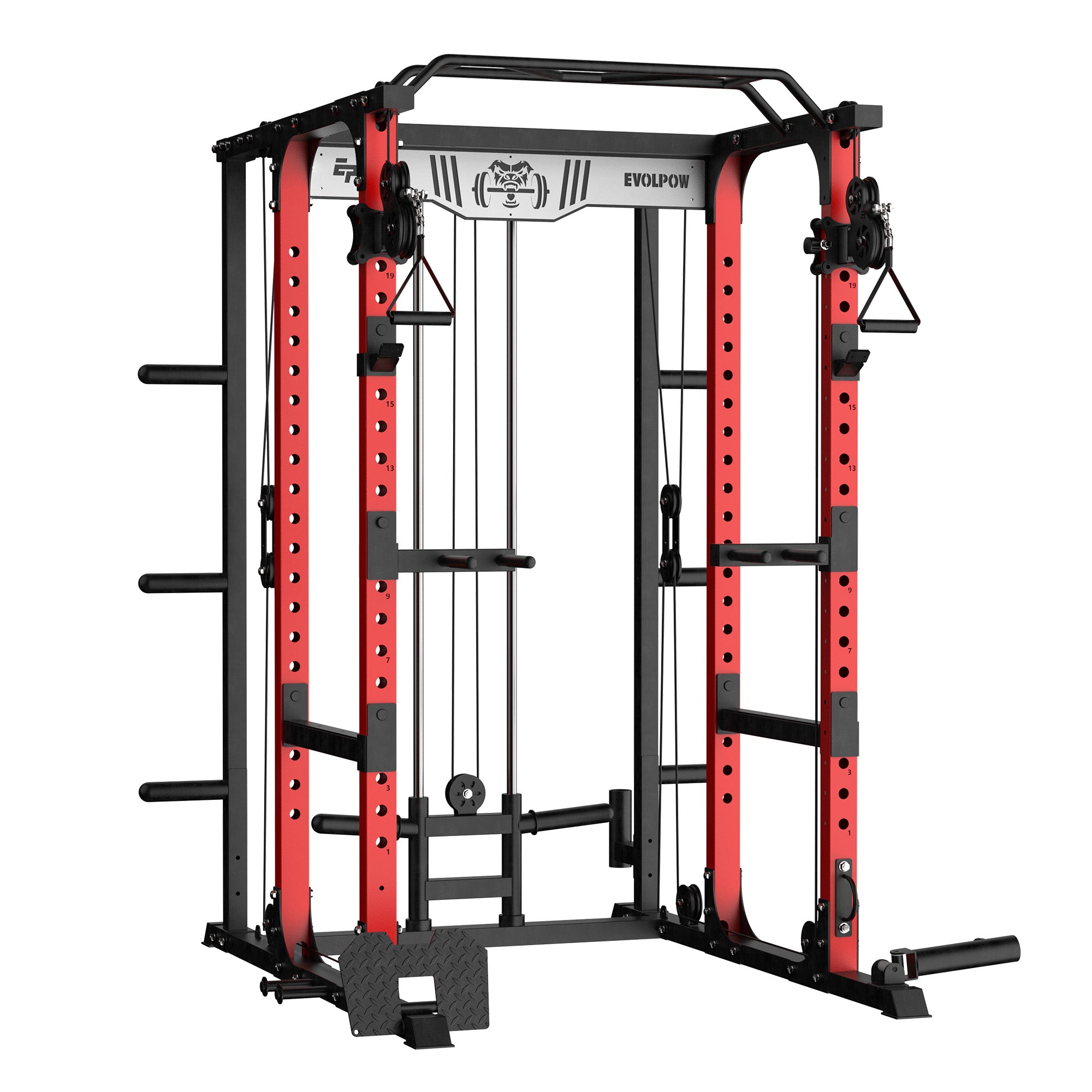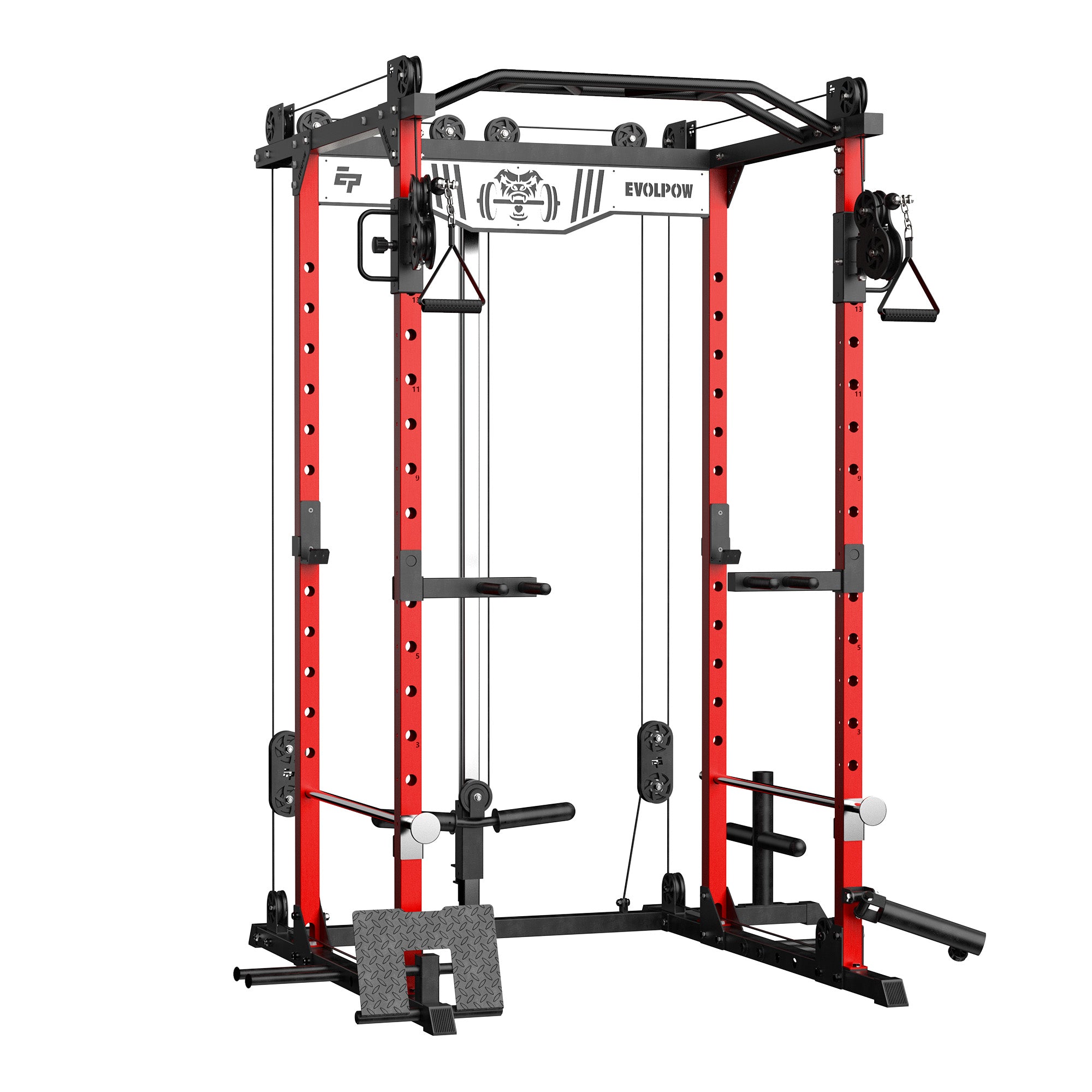Want to build strong legs but feel nervous about free-weight squats? Or maybe you're new to strength training and worried about dropping the bar? The Smith Machine might just be the perfect solution for you—especially if you're working out solo or setting up your own home gym.
This beginner-friendly guide will walk you through everything you need to know about Smith Machine squats. We’ll cover what they are, how they differ from traditional squat racks, what muscles they target, and how to use the machine properly—step by step. Whether you're training at the gym or building your home gym equipment setup, this guide is designed to help you squat confidently and safely with the Smith Machine.
Let’s get into it.
Content
What are Smith Machine Squats?
Smith Machine Vs Squat Rack – What’s The Difference?
Smith Machine Squats Muscles Worked
How To Squat On The Smith Machine?
What are Smith Machine Squats?
Smith Machine squats are a variation of traditional barbell squats performed using this specialized equipment. Unlike free-weight squats, Smith Machine squats offer built-in safety stops and lockout points, so beginners can push themselves without the risk of getting stuck under the bar. It’s especially helpful for solo training or those easing into barbell exercises.

Smith Machine Vs Squat Rack – What’s The Difference

Based on the comparison table above, it's clear that the Smith Machine and Squat Rack each serve different training purposes.
The Smith Machine offers a fixed vertical bar path, built-in safety hooks, and greater stability—making it ideal for beginners, injury prevention, or those who want to focus on isolated movements like glute or quad training. Its ease of use and safety features make it especially appealing for people training alone at home or setting up a compact home gym with multi-functional equipment.
On the other hand, a Squat Rack provides full freedom of movement and engages more stabilizing muscles, which is excellent for developing overall strength and functional fitness. However, it usually requires more space, better lifting technique, and ideally a spotter—making it a better fit for more advanced lifters or those training in a well-equipped environment.
That said, both have their place. If you're a beginner, or someone who values safety, or ease of use, the Smith Machine is a smart and accessible option. But if your budget is tight, or you're focused on building a traditional free-weight setup, a squat rack still offers a lot of value—as long as you’re confident in your form and lifting technique.
In short, it’s not about which one is better—it’s about choosing what works best for your goals, your space, and your budget.

Smith Machine Squats Muscles Worked
Smith Machine squats primarily target the lower body muscles, with a focus on:
-
Quadriceps: The quadriceps are heavily engaged during the upward phase of the squat, especially when you're pushing up from the lowered position.
-
Hamstrings: While less emphasized than the quads, the hamstrings play a role in lowering and lifting the body during the squat.
-
Gluteus Maximus: The glutes are activated significantly, especially during the upward phase of the squat, helping in hip extension.
-
Gastrocnemius and Soleus: The calf muscles assist in stabilizing the ankle joint during the squat.
-
Adductors: These muscles help stabilize the movement, especially during the lowering phase.

How To Squat On The Smith Machine?
-
Set Up Your Stance Step under the bar so it’s resting comfortably on your traps, not your neck. This means the bar should sit on the soft, muscular part of your upper back—not directly on your spine. Squeeze your shoulder blades together and drive your elbows slightly back to create a “shelf” for the bar to rest on.
-
Find the Right Foot Position Unlike a regular back squat, your feet shouldn’t be directly under you in the Smith Machine. Instead, walk your feet one or two steps forward from the bar. This angled stance helps you maintain balance and proper alignment throughout the squat. Your stance should be a bit wider than shoulder-width—this gives your hips room to open and helps avoid the dreaded “butt wink” (where your lower back rounds at the bottom of the squat).
-
Brace and Unrack Inhale deeply, brace your core, and twist the bar to unlock it from the machine hooks. Keep your chest up and shoulders engaged.
-
Squat With Control Lower yourself slowly and under control, aiming for full depth (at or just below parallel). Don’t rush this part—descending too fast can compromise your form and reduce effectiveness. If your heels start to lift or your torso leans too far forward, adjust your foot position.
-
Drive Up With Power Once you’ve reached full depth, push through your heels to drive back up to standing. You can be more explosive here, but don’t let the bar bounce at the top—if it does, it’s a sign you need more weight or better control.
-
Breathe Properly Exhale as you come up, or reset your breath at the top before the next rep.
Pro Tip: Struggling to get deep in your squat? It might be a mobility issue. Try adding some ankle or hip mobility drills—or or using box squats to work on depth without losing form.

Evolpow’s Smith Machines: A user-friendly multi-functional device for beginners

EVOLPOW M2A Smith Machine is one of the best-selling products. This innovative All-In-One Smith Machine is a game-changing addition to home gyms, consolidating 6 strength training stations into one compact unit. The M2A seamlessly combines a power rack, Smith machine, cable pulley system, chest station, multi-grip pull-up bar, and a 360° landmine, all within a versatile piece of equipment. Constructed from durable 2x2" 14-gauge steel, the M2A Smith machine ensures a secure, robust, and adaptable environment for effective strength training.
CONCLUSION
In conclusion, if you’re new to squatting, working out alone, or just want a safer way to learn the ropes—Smith Machine squats are an ideal place to start. With its fixed movement path, built-in safety stops, and beginner-friendly setup, the Smith Machine takes the fear out of barbell training while still helping you build real strength.
It’s not a replacement for free-weight squats in the long run, but it’s a powerful tool for mastering technique, increasing leg strength, and building confidence under the bar.
Whether you’re training at home or in the gym, the Smith Machine can be your stepping stone to better squats—and stronger legs.
FAQ
Q: Is the Smith Machine squat as effective as a free barbell squat?
A: While Smith Machine squats offer more stability and are great for beginners or those recovering from injury, they don’t engage as many stabilizing muscles as free barbell squats. For overall strength development, free squats may be more effective, but Smith Machine squats are excellent for targeting specific muscles like the quads and glutes in a safer, controlled motion.
Q: What muscles do Smith Machine squats target the most?
A: Smith Machine squats primarily target quadriceps, glutes, and hamstrings. Because of the fixed bar path, you can slightly adjust your foot placement to shift emphasis—for example, placing feet forward can engage more glutes and hamstrings, while a more upright stance focuses on quads.
Q: How should I position my body to avoid injury when using the Smith Machine?
A: Keep your feet slightly forward from the bar, maintain a neutral spine, and avoid locking your knees at the top. Make sure your knees don’t extend far past your toes during the movement. Always warm up properly and start with lighter weights to ensure correct form.
REFERENCE
https://www.youtube.com/watch?v=yoP29LtTdnQ
https://www.womenshealthmag.com/fitness/a63572763/how-to-use-a-smith-machine/
https://www.strengthlog.com/smith-machine-squat/
https://www.gymshark.com/blog/article/everything-you-need-to-know-about-smith-machine-squats
https://strengthwarehouseusa.com/blogs/resources/smith-machine-vs-squat-rack?
http://www.planetfitness.com/blog/articles/smith-machine-squats






